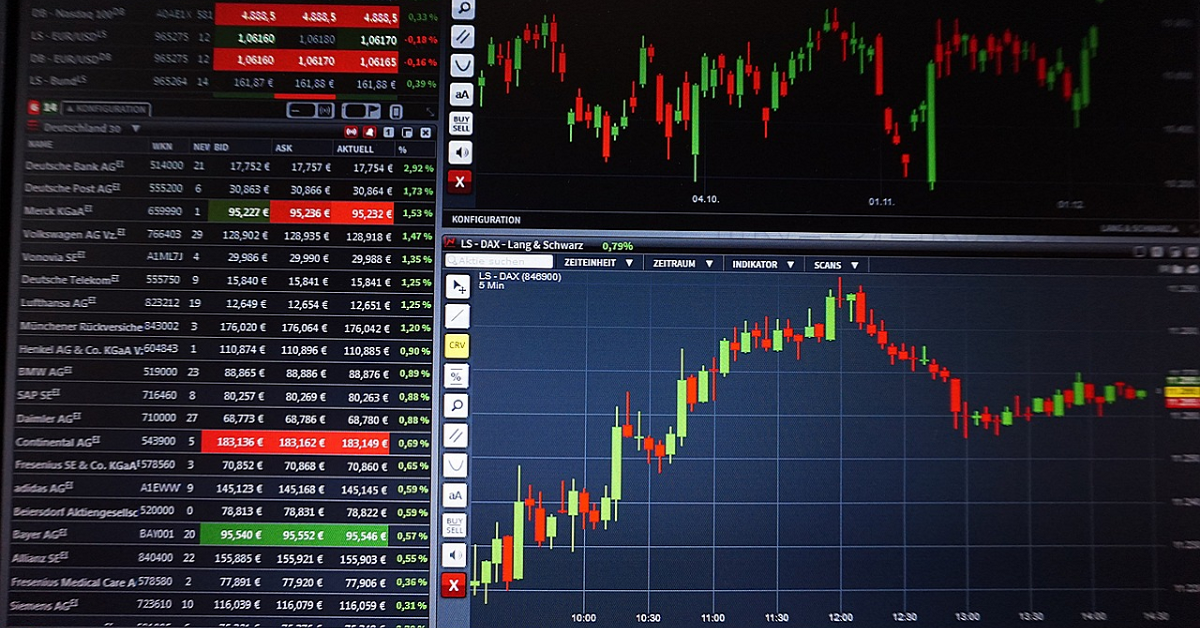Opening a Forex trading account marks the beginning of an exciting journey into the global finance market. Understanding the Forex landscape, selecting a broker, and implementing risk management strategies are essential steps that contribute to a successful trading experience. This guide delves into each of these facets, ensuring that you have a comprehensive understanding of how to effectively open and manage a Forex trading account, setting you on a path toward financial growth.

A Gateway to Your First Trading Account
Forex trading, at its core, revolves around the swift exchange of currencies in a market that never sleeps. Known for its immense size and liquidity, the Forex market sees daily transactions reaching staggering amounts, anywhere from $6 trillion to $7.5 trillion. It functions 24 hours a day, starting when the Australian market opens on Sunday and ending with the New York market's close on Friday. This round-the-clock nature offers traders ample opportunities to capitalize on market movements.
The Core Mechanics of Forex Trading
To thrive in Forex trading, it's crucial to grasp how currency pairs work. Each trade involves simultaneously buying one currency and selling another, with the primary aim to profit from fluctuations in exchange rates. Trading pairs fall into three main categories:
- Major Currency Pairs: These include combinations like EUR/USD and USD/JPY, known for their high liquidity and narrower spreads.
- Minor Currency Pairs: An example here is EUR/GBP, with slightly wider spreads and lower liquidity.
- Exotic Currency Pairs: Involving a major currency and one from an emerging market, like USD/TRY, these pairs present wider spreads and are less liquid.
Leverage and Pip-the Building Blocks of Forex
Understanding the concepts of leverage and pips is also fundamental. A pip represents the smallest price change in a currency pair. For instance, a shift in the EUR/USD pair from 1.1500 to 1.1501 reflects a one-pip movement. Leverage, on the other hand, allows traders to wield greater market exposure with a smaller amount of invested capital. While it can magnify returns, it equally amplifies losses, thus requiring careful consideration.
Embarking on Your Forex Trading Journey
Opening a Forex trading account serves as your entry point into this dynamic market. The process begins by researching and selecting a reputable broker. This decision hinges on factors such as regulatory compliance, trading fees, and platform offerings. Brokers typically offer various account types, like micro accounts, which are ideal for beginner traders due to their lower deposit requirements.
Before diving in with actual funds, practicing with a demo account is highly beneficial. Demo accounts provide a risk-free environment to hone your trading strategies and familiarize yourself with the platform-a critical step before committing real capital. When you're ready, start small and remember to manage your risk appropriately.
To further guide you in opening a Forex account, additional detailed resources can be found here https://fbs.com/open-forex-account. This comprehensive resource complements your growing understanding of the Forex market and outlines the step-by-step process to get started.
Approaching Forex trading with the right knowledge and preparation lays a strong foundation for future successes. The journey may be challenging, but with continuous learning and prudent risk management, the Forex market offers a realm of potential for those ready to explore.
Selecting the Right Broker for Your Forex Trading Success
Selecting a Forex broker is a crucial step in the journey of opening a Forex trading account. The choice you make can impact not only your trading experience but also your potential success. It's important to identify a broker that aligns with your financial goals, trading style, and risk appetite.
Evaluating Broker Credibility
Understanding the regulatory landscape is the first step. A broker that operates under the oversight of well-known institutions, such as the CFTC or FSA, is generally more reliable. These bodies ensure brokers adhere to strict operational standards, safeguarding your investments and enhancing trust.
In addition to regulation, platform usability is significant. A user-friendly platform ensures smooth navigation and efficient trading. Opt for platforms like MT4 and MT5, known for their comprehensive tools and customization options, which cater to both novice and experienced traders.
Customer Support and Trading Conditions
Responsive customer support can make a huge difference when you encounter issues. Testing a broker's support service prior to full commitment is recommended. Engage with their support via calls or emails to evaluate professionalism and resolution speed. Brokers with commendable customer service leave you equipped to handle any trading hiccup effectively.
Leverage options provided by a broker determine your market exposure level. While high leverage can multiply your returns, it inherently raises risks. Beginners should prefer brokers offering sensible leverage, avoiding those with extremely high options unless confident in their risk management strategies.
Additional Considerations
- Account Minimums: Low or no minimum requirements are ideal for starting traders, allowing entry without significant initial commitments.
- Promotions and Incentives: Incentive offers can be attractive but should be scrutinized carefully by reading all associated terms and conditions.
- Educational Resources: Quality educational tools provided by brokers are invaluable for sharpening skills and enhancing market understanding.
Evaluating trading costs, such as spreads and fees, is crucial. Each broker has unique cost structures that can affect profitability. Understanding these costs, including any hidden fees, is essential before making a choice.
Choosing a Forex broker involves a blend of verifying regulation, evaluating platform usability, and understanding leverage conditions among other factors. This careful selection process helps in setting a firm foundation for your trading endeavors, aligning with your trading objectives and risk preferences.
Mastering Risk Management
One of the first steps in risk management is identifying your personal risk tolerance, which is the level of risk you are comfortable taking. This understanding shapes every decision and guides you in setting practical goals. It assists in determining position sizing-deciding how much of your portfolio to invest in a single trade. Carefully calibrated position sizing prevents over-exposure to any one trade, thus limiting potential losses.
To manage risks effectively, traders should use the principle of position sizing. This involves ensuring that each trade only risks a small percentage of your total capital, typically around 1-2%. By adhering to this percentage, you can endure losing streaks with minimal dent to your overall account balance.
Implementing Risk/Reward Ratios and Stop-Loss Orders
Another fundamental aspect of risk management is the risk/reward ratio, which compares the potential profit of a trade against the potential loss. Setting a favorable risk/reward ratio, like 1:2 or 1:3, ensures that your profitable trades outweigh any losses over time. Coupled with this is the use of stop-loss orders, a critical tool that automatically closes a trade once it reaches a pre-set loss level. This technique minimizes losses and guards against emotional decision-making during market fluctuations.
Diversification and Education
Diversifying your investments across multiple currency pairs can further mitigate risk, as it reduces the impact of a loss in one pair on your overall portfolio. Additionally, continuous education and research are indispensable for staying informed about market trends and economic indicators that might affect trading conditions. Leverage resources, such as online articles, forums, and seminars, to deepen your understanding and adapt your strategy as needed.
Emotional Discipline: The Psychological Factor
Trading discipline is another cornerstone of effective risk management. The market can be emotionally taxing, as it presents both daunting challenges and thrilling opportunities. Maintaining discipline means sticking to your trading plan, avoiding impulsive trades driven by fear or greed, and exercising patience to wait for optimal trading conditions. It's paramount that traders view losses as natural components of trading, encouraging a mindset that learns from each mistake rather than seeking revenge trades.
By integrating these strategies into your trading routine, you can create a fortified approach to risk management. This groundwork will not only protect your initial capital but also position you for long-term profitability and growth in the Forex market. Remember, a conservative and informed approach to risk ensures longevity in trading, allowing you to seize opportunities while keeping potential pitfalls at bay.
Essential Steps for Forex Trading
To navigate the complexities of Forex trading successfully, it's vital to grasp the market fundamentals, select the right broker, and prioritize risk management. By following the outlined steps and maintaining a disciplined approach, traders can open their Forex accounts with confidence and increase their chances of long-term success.







 CAclubindia
CAclubindia
